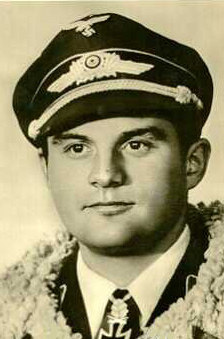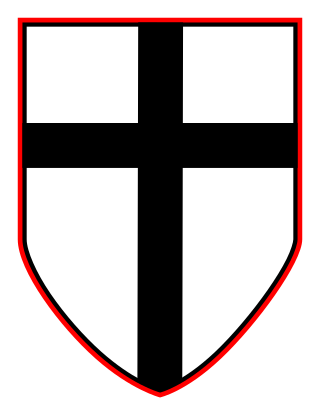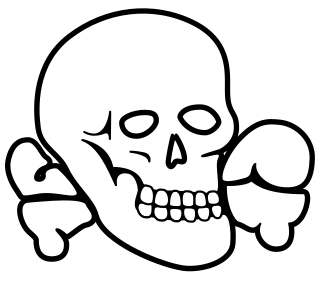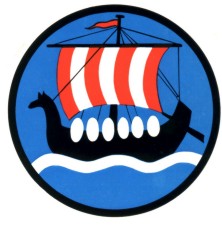Kampfgeschwader 55 "Greif" was a Luftwaffe bomber unit during World War II. KG 55 was one of the longest serving and well-known in the Luftwaffe. The wing operated the Heinkel He 111 exclusively until 1943, when only two staffeln of its four Gruppen (Groups) used the Junkers Ju 88C.

Joachim Helbig was a German bomber pilot during World War II. He joined the Luftwaffe in 1936, and served almost all of his career with Demonstration Wing 1. With his unit, he participated in the Invasion of Poland, the Norwegian Campaign, the Battles of the Netherlands, Belgium, France and Britain in 1939–40. For his contributions in these campaigns, Helbig received the Knight's Cross of the Iron Cross in late 1940. He was then transferred to the Mediterranean theater where he bombed Malta, the British Mediterranean Fleet and flew in support of the Afrika Korps. Helbig received the Knight's Cross of the Iron Cross with Oak Leaves and Swords in late 1942 for the support of Field Marshal Erwin Rommel's 1942 summer offensive.

Sturzkampfgeschwader 2 Immelmann was a Luftwaffe dive bombing squadron wing of World War II. It was named after the World War I aviator Max Immelmann. It served until its dissolution in October 1943. The wing operated the Junkers Ju 87 Stuka exclusively.

Kampfgeschwader 3 "Blitz" (KG 3) was a Luftwaffe bomber wing during World War II.
Kampfgeschwader 51 "Edelweiss" (KG 51) was a Luftwaffe bomber wing during World War II.

Kampfgeschwader 76 was a Luftwaffe bomber Group during World War II. It was one of the few bomber groups that operated throughout the war.

Kampfgeschwader 54 "Totenkopf" was a Luftwaffe bomber wing during World War II. It served on nearly all the fronts in the European Theatre where the German Luftwaffe operated.

Kampfgeschwader 53 "Legion Condor" was a Luftwaffe bomber wing during World War II. Its units participated on all of the fronts in the European Theatre until it was disbanded in May 1945. At all times it operated the German bomber type Heinkel He 111. Only the 15th (kroat) Squadron of KG 53, established in Agram (Zagreb) July 1942, operated the Dornier Do 17 Z.
Kampfgeschwader 77 was a Luftwaffe bomber wing during World War II. Its units participated on all of the major fronts in the European Theatre until its dissolution in 1944. It operated all three of the major German bomber types; the Dornier Do 17, Heinkel He 111 and the Junkers Ju 88.

Hubertus Hitschhold was a German general and ground-attack pilot during World War II. He was a recipient of the Knight's Cross of the Iron Cross with Oak Leaves of Nazi Germany.
Zerstörergeschwader 76 was a Zerstörergeschwader (wing) of the German Luftwaffe during World War II. The wing operated the Messerschmitt Bf 109 in the early phases of World War II, then the Messerschmitt Bf 110 for the duration of the war.

Unternehmen Paula is the German codename given for the Second World War Luftwaffe offensive operation to destroy the remaining units of the Armée de l'Air (ALA), or French Air Force during the Battle of France in 1940. On 10 May the German armed forces (Wehrmacht) began their invasion of Western Europe. By 3 June, the British Army had withdrawn from Dunkirk and the continent in Operation Dynamo, the Netherlands and Belgium had surrendered and most of the formations of the French Army were disbanded or destroyed. To complete the defeat of France, the Germans undertook a second phase operation, Fall Rot, to conquer the remaining regions. In order to do this, air supremacy was required. The Luftwaffe was ordered to destroy the French Air Forces, while still providing support to the German Army.

Kampfgeschwader 2 " Holzhammer " was a Luftwaffe bomber unit during the Second World War. The unit was formed in May 1939. The unit operated the Dornier Do 17 light bomber, Dornier Do 217 and Junkers Ju 188 heavy bombers. During the course of the Second World War KG 2 lost 767 aircraft destroyed and 158 damaged. According to H.L. de Zeng at al, it suffered 1,908 personnel killed in action or missing in action and 214 as prisoners of war. Broken down further, for the duration of the war KG 2 lost 1,228 killed, 688 missing, 656 wounded and with 214 captured, for a total of 2,786 in both combat and non-combat operations.

Kampfgeschwader 30 was a Luftwaffe bomber wing during World War II.

Sturzkampfgeschwader 1 was a Luftwaffe dive bomber wing during World War II.

Kampfgeschwader 1 was a German medium bomber wing that operated in the Luftwaffe during World War II.

Sturzkampfgeschwader 77 (StG 77) was a Luftwaffe dive bomber wing during World War II. From the outbreak of war StG 77 distinguished itself in every Wehrmacht major operation until the Battle of Stalingrad in 1942. If the claims made by StG 77 are accurate, it inflicted more damage to enemy ground forces than any other wing. It operated the Junkers Ju 87 dive-bomber exclusively in the combat role. The Dornier Do 17 and Messerschmitt Bf 110 were both used in the air reconnaissance role.
'Kampfgeschwader' 27 Boelcke was a Luftwaffe medium bomber wing of World War II.

Kampfgeschwader 100 was a Luftwaffe medium and heavy bomber wing of World War II and the first military aviation unit to use a precision-guided munition in combat to sink a warship on 9 September 1943.
Zerstörergeschwader 2 was a Luftwaffe heavy/destroyer Fighter Aircraft-wing of World War II.
















